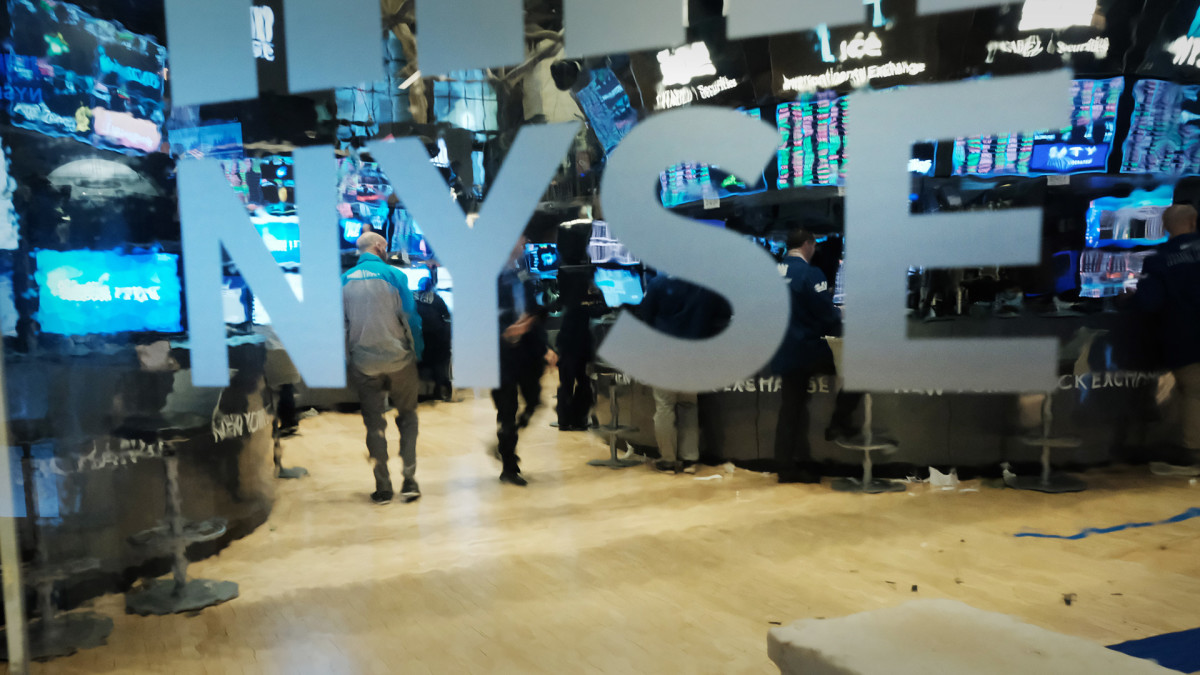
Updated 4:10 p.m.
Dow closes at fresh record high
The Dow Jones Industrial Average finished at a record high Thursday rising 158 points, or 0.43%, to 37,248, while the S&P 500 gained 12 points, or 0.26%, and the Nasdaq advanced 27 points, or 0.19%.
The Dow's record close came one day after the 30-company index closed above 37,000 for the first time.
Stocks were boosted by a gain in retail sales, while the 10-year Treasury note yield dropped below 4% for the first time since August.
The Federal Reserve's Open Market Committee on Wednesday held its key policy rate at between 5.25% and 5.5%, the highest in 22 years, a move that was widely expected by Wall Street following the last quarter-point rate hike in July.
However, the Fed's new Summary of Economic projections, better-known as the dot plots, now suggests the federal funds rate will fall by 75 basis points, or 0.75 percentage point, next year, a sharp pivot from recent comments that had indicated a "higher-for-longer" rate stance.
Initial jobless claims fell by 19,000 to 202,000 in the week ended Dec. 9, the U.S. Labor Department said, the lowest level since mid-October.
Mortgage rates dip
The Dow rose 54 points, or 0.15%, to 37,144, while the S&P 500 gained 1 point, or 0.02%, and the Nasdaq slipped 29 points, or 0.29%.
Mortgage rates hit the 6% range for the first time since August.
The average rate on the 30-year mortgage dropped to 6.95% from 7.03% the week before, according to Freddie Mac. Rates fell for the seventh consecutive week and hit the lowest level since early August when rates were 6.96%.
“Given inflation continues to decelerate and the Federal Reserve Board’s current expectations that they will lower the federal funds target rate next year, there will likely be a gradual thawing of the housing market in the new year,” Freddic Mac said on its website.
Looking for bargains
The Dow rose 115 points, or 0.31%, to 37,206, while the S&P 500 gained 21 points, or 0.45%, and the Nasdaq advanced 50 points, or 0.34%.
After a downward revision in October, retail sales rose in November, which Jeffrey Roach, chief economist for LPL Financial, said was supported by another strong month of restaurant spending.
"The fact that November department store sales were down 5.2% from a year ago but online retailers were up over 8% showed that consumers shunned brick and mortar stores in favor of online retailers,” Roach said. "The consumer is becoming more price-conscious, looking for bargains at online retailers."
Roach said that retailers “will have to be creative to keep consumers engaged amid a potential turning point in the macro landscape.”
“The Fed’s open discussion about interest rate cuts will certainly be helpful for investors looking to take on calculated risk,” he said.
Updated 9:52 a.m. EST
Retail Rebound
The Dow rose 114 points, or 0.31%, to 37,204, while the S&P 500 gained 27 points, or 0.59%, and the Nasdaq advanced 99 points, or 0.67%.
Retail sales rebounded 0.3% in November, the Commerce Department's Census Bureau said, as the holiday shopping season got off to a brisk start.
"Consumers are sustaining the U.S. economic expansion," Bill Adams, chief economist for Comerica Bank. "Risk of a recession near-term is receding with prices of gas and home heating down sharply, employment rising, and mortgage rates falling."
Data for October were revised lower to show sales falling 0.2% instead of dipping 0.1% as previously reported. Economists polled by Reuters had forecast retail sales edging down 0.1%.
Initial jobless claims fell by 19,000 to 202,000 in the week ended Dec. 9, the U.S. Labor Department said, the lowest level since mid-October.
Stocks were climbing Thursday one day after the Dow Jones Industrial Average closed at a record as the Federal Reserve indicated that it could begin easing interest-rate policy in 2024.
The Federal Reserve's Open Market Committee on Wednesday held its key policy rate at between 5.25% and 5.5%, the highest in 22 years, a move that was widely expected by Wall Street following the last quarter-point rate hike in July.
However, the Fed's new Summary of Economic projections, better-known as the dot plots, now suggests the federal funds rate will fall by 75 basis points, or 0.75 percentage point, next year, a sharp pivot from recent comments that had indicated a "higher-for-longer" rate stance.
"The FOMC statement reiterated that the Fed will ‘proceed carefully’ in setting monetary policy, meaning rates will likely be on hold near term," Adams said.
"However," he added. "Chair Powell revealed in the post-meeting press conference that rate cuts were discussed at the meeting, which in the Kabuki conventions of American monetary policy indicates that a rate cut is getting more likely in the next half year."
The yield on 10-year US Treasurys fell below 4% for the first time since August on Thursday as investors reacted to the Fed's guidance.
The economic calendar calls for the retail-sales and the weekly-jobless-claims reports.
Shares of Adobe (ADBE) -) were down after the cloud software company beat Wall Street's fourth-quarter estimates but offered disappointing guidance.
For its full fiscal 2024, Adobe forecast adjusted earnings of $17.80 a share, on sales of $21.4 billion. Analysts were expecting earnings of $18 a share on sales of $21.73 billion.
Vivendi (VIVHY) -) surged after the Paris media and telecom company said it examined a possible split into three businesses around Canal+, Havas and an investment company.
On the political front, House Republicans voted Wednesday to formalize an impeachment inquiry into President Joe Biden.
Hunter Biden, the president’s son, defied Republican investigators' subpoena for closed-door testimony and reiterated his willingness to testify publicly. Republicans said they would initiate contempt proceedings against him for not agreeing to appear for the deposition.







